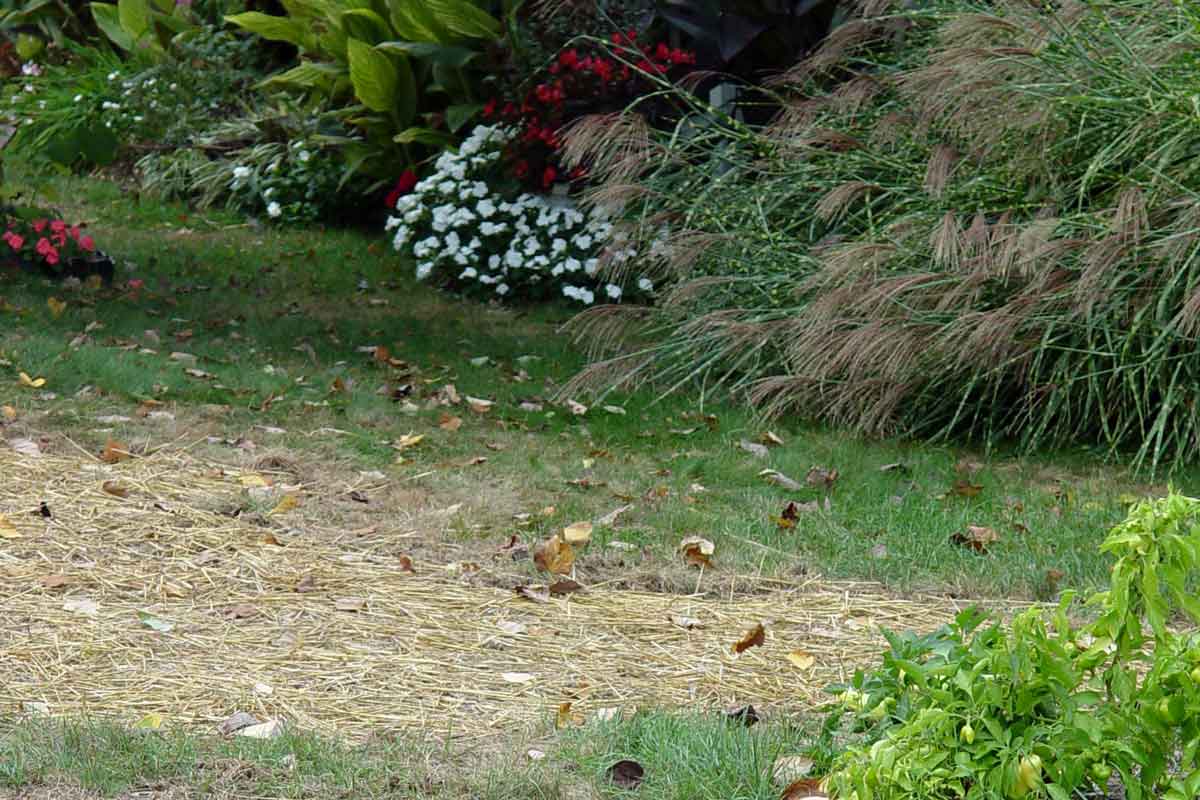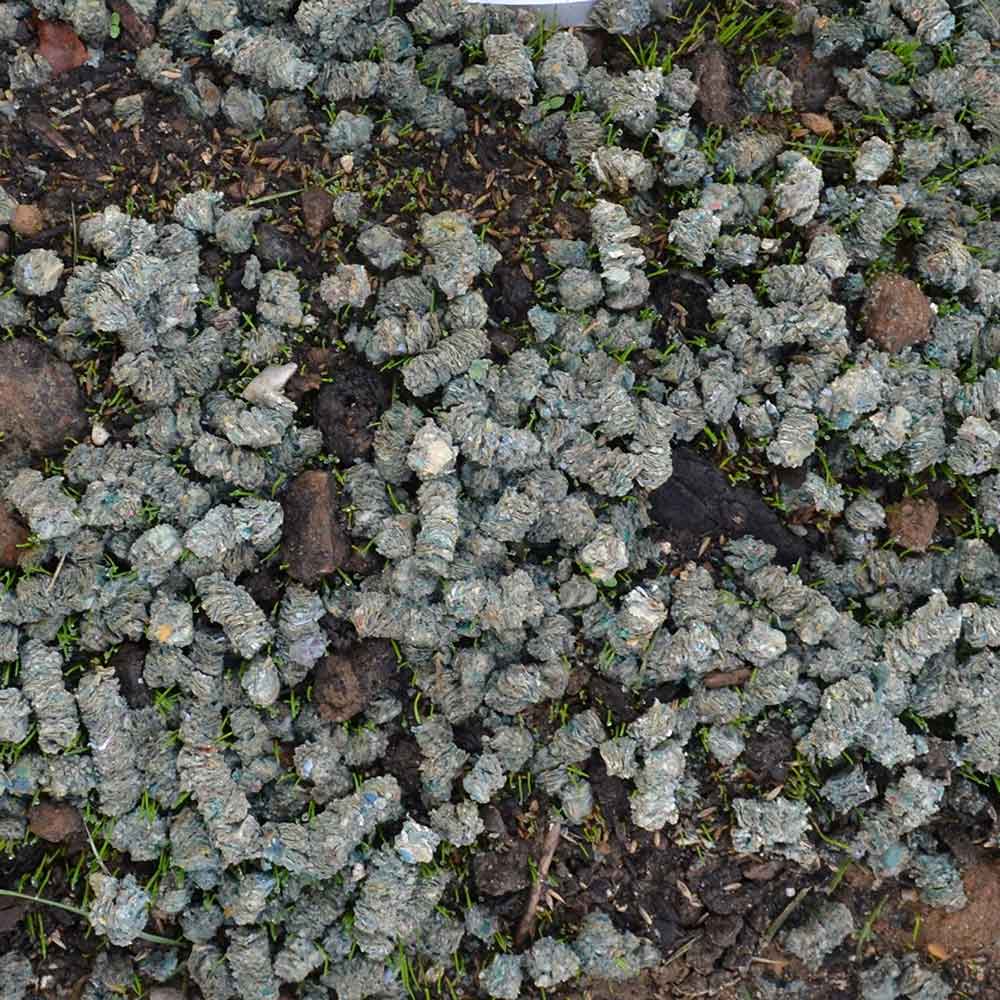The first two steps of seeding or overseeding a lawn are starting with fresh, high-quality seed and getting that newly planted grass seed into good contact with the soil.
The third critical step is keeping the ground constantly damp so the seed germinates well and young roots don't immediately die in dry soil.
Straw is the traditional aid often recommended to cover grass seed, mainly to help retain moisture. However, it's not necessary to use straw to grow grass, and there are better options you can choose from.
Why You Shouldn't Use Straw
When considering straw for grass seed, it's important to be aware of the potential negative impact on your lawn:
Confusion with Hay
Straw is often confused with hay. If it's hay, this grain product comes with seed heads attached, which can germinate along with the grass seed.
Weed Contamination
Both straw and hay can contain high levels of weed seeds. These are usually small and hard to see, so they can easily go unnoticed. As your grass seeds start growing, these weed seeds can sprout, too. This means weeds might start growing right alongside your new grass.
Inhibits Germination
Excessive straw can prevent grass seed germination. If the straw layer is too thick, it can act as a barrier, blocking light and air needed for seed germination. It can also cause water to pool and the straw to rot over time.
Practical Issues
Straw can blow around and detract from the look of the new lawn until mowed for the first time.
Cleanup
You'll need to rake off the unsightly straw after the grass grows, but you will also risk damaging young grass blades and roots if you do.

Though straw is the traditional covering for newly seeded lawns, it isn’t the best option.
The Superior Alternative to Straw: Seeding Success
GreenView Fairway Formula Seeding Success is a seeding mulch alternative that combines paper mulch with a starter lawn fertilizer and a tackifier. Seeding Success is a better option when seeding, as it helps to get the grass off to the best start while not introducing weeds to the area.
Whether you are planting cool-season grass or warm-season grass, Seeding Success offers several advantages over straw:
Enhanced Germination – Seed Accelerator
Seeding Success includes starter fertilizer, providing additional nutrients that grass seed requires to germinate more quickly and effectively. This mix of nutrients helps create the best conditions for the grass roots to start growing strong and healthy.
100% Weed Free
Unlike straw or hay, Seeding Success contains no weeds, ensuring that your lawn grows weed-free. This helps guarantee a pure start for your grass, free from the competition and problems associated with weed contamination.
Uses Less Water
Seeding Success Pellets hold 3x their weight in water, keeping the seed and soil moist during germination and allowing you to spend less time (and money) watering newly seeded areas.
This is great for dry areas where you need to water often.
Protects Seed
Seeding Success effectively shields seeds from the sun, birds, or erosion, creating a safer environment for germination and growth. This protection helps maintain ideal moisture levels and prevents external factors from hindering the seeds' development.
No Cleanup
Seeding Success is biodegradable, so the pellets naturally decompose and add organic material to your soil. This process eliminates the need for removal and enhances soil fertility, promoting healthier lawn growth.
Easy Application
The product can be effortlessly spread over the grass seed and then watered in, making for a straightforward application process. This ensures even coverage without the hassle and mess often associated with straw.
Keeps Seed in Place
Seeding Success contains a unique tackifier that helps lower the chance of seeds being moved by wind or water, leading to even growth all over the lawn.
View Comparison >

Seeding Success is a better option when seeding new lawn areas, as it helps get the grass off to the best start while not introducing weeds.
How to Use Seeding Success
1. Plant Grass Seed
Start by planting your grass seed in the usual manner. Prepare your soil by lightly raking the top 1-2 inches of the soil surface. Then, evenly spread the grass seed to guarantee maximum coverage and ideal growth conditions.
2. Apply Seeding Success
After planting the grass seed, cover the seeded area with Seeding Success pellets. Carefully apply these pellets to cover approximately one-fourth of the seeded ground. This ensures that the seeds are sufficiently covered without being overwhelmed.
3. Water in
After applying Seeding Success, water the treated area. The Seeding Success pellets will darken as you water, indicating that they have absorbed the water. This is essential for initiating the germination process.
Over time, the pellets will lighten in color as they dry out, signaling when it is time to water your lawn again. This color change acts as a helpful guide to maintaining the correct moisture level for your new grass.